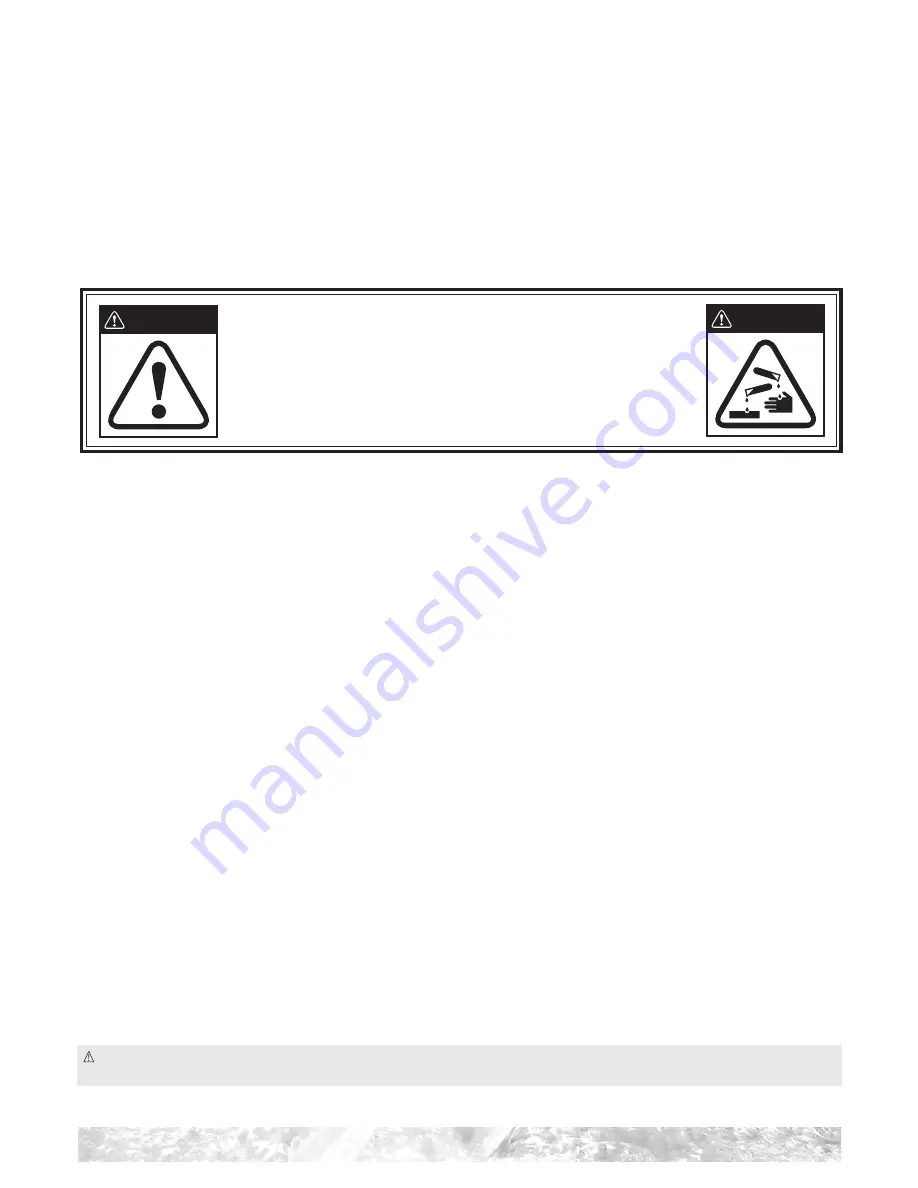
Page 33
maintenance program based on recognized and documented industry standards still be followed when using an ozone purification system to
assure water sanitation and the highest quality purified water.
Cleaning the Ozone Injector (Optional Equipment)
On occasion, a mineral build-up may clog the ozone injector, causing a lack of flow, or low flow of ozone bubbles. To prevent this, refer to the
following instructions to clean the injector:
1. Disconnect power to the hot tub.
2. Access the equipment compartment.
3. Locate the ozonator in the equipment compartment and unplug the ozonator from the control box.
4. Place 16 ounces of white vinegar into a container such as a cup or bucket. Place the container on the equipment compartment floor.
NOTE: White vinegar will not damage any of the hot tub components.
5. Carefully loosen the long Tygon/Kynar tubing to the bottom of the ozonator.
A liquid substance may be found inside the tubing. If a liquid
substance is present, BE CERTAIN NOT TO COME INTO CONTACT WITH THE LIQUID (SEE WARNING ON ABOVE).
6. Place the end of the tubing into the vinegar, making certain that the end of the tubing sits at the bottom of the container.
7. Reconnect power to the hot tub.
8. Run the hot tub until all 16 ounces of the vinegar are gone. This should allow an ample flow of vinegar to be run through the injector and clear
the blockage.
9. Disconnect power to the hot tub.
10. Remove the empty cup or bucket.
11. Reinstall the tubing to the bottom of the ozonator.
12. Plug the ozonator into the control box.
13. Close the equipment compartment door.
14. Reconnect power to the hot tub.
DOS AND DON’TS
• DO use only a granular form of sanitizer.
• DO add all chemicals slowly into the filter compartment with the jet pump operating for ten minutes.
• DO use special care if using baking soda to clean either the interior or exterior plastic surface
• DON’T use swimming pool (muriatic) acid to lower pH.
• DON’T splash pH increaser additives on the ELMwood
™
cabinet.
• DON’T use Compressed Sanitizers.
The use of bromine sticks or tablets in floaters, which may become entrapped in a lounge or cooling seat (or sink to the hot tub floor), have been
shown to cause discoloration of or surface distress to a hot tub’s shell.
• DON’T use a floater type sanitization system as a low or no maintenance solution to your hot tub maintenance program.
The hot tub shell easily can withstand the effects of a properly administered sanitizer. Floating dispensers can become trapped in one area and
cause an over-sanitization (or chemical burn) of that particular area.
If the dispenser setting is too high, the high concentration can discolor the hot tub shell and damage the underside of the cover.
Automatic floating dispensers have a tendency to either over-brominate or under-brominate as the rate of erosion varies greatly. Damage to the
hot tub and cover can occur very quickly.
WARNING:
Watkins Manufacturing Corporation
DOES NOT
recommend the use of any floating chemical dispenser. Damage to the hot tub
shell or components caused by a floating chemical dispenser is specifically not covered under the terms of the limited warranty.
Water Quality and Maintenance
Nitric acid accumulates in the air lines of the ozonator and
injector. Nitric acid will cause severe chemical burns if direct skin
contact is made, so always wear protective gloves, glasses and
clothing when working on the ozonator or injector lines. To
prevent inhalation or ingestion of the nitric acid, DO NOT blow or
inhale with your mouth to any of the adapters, fittings or tubing of
the ozonator or injector air lines.
WARNING
WARNING
Page 33
Water Quality and Maintenance
Summary of Contents for FLR
Page 1: ...Page 1 O w n e r s M a n u a l by...
Page 43: ...Page 40 Page 40 NOTES...









































